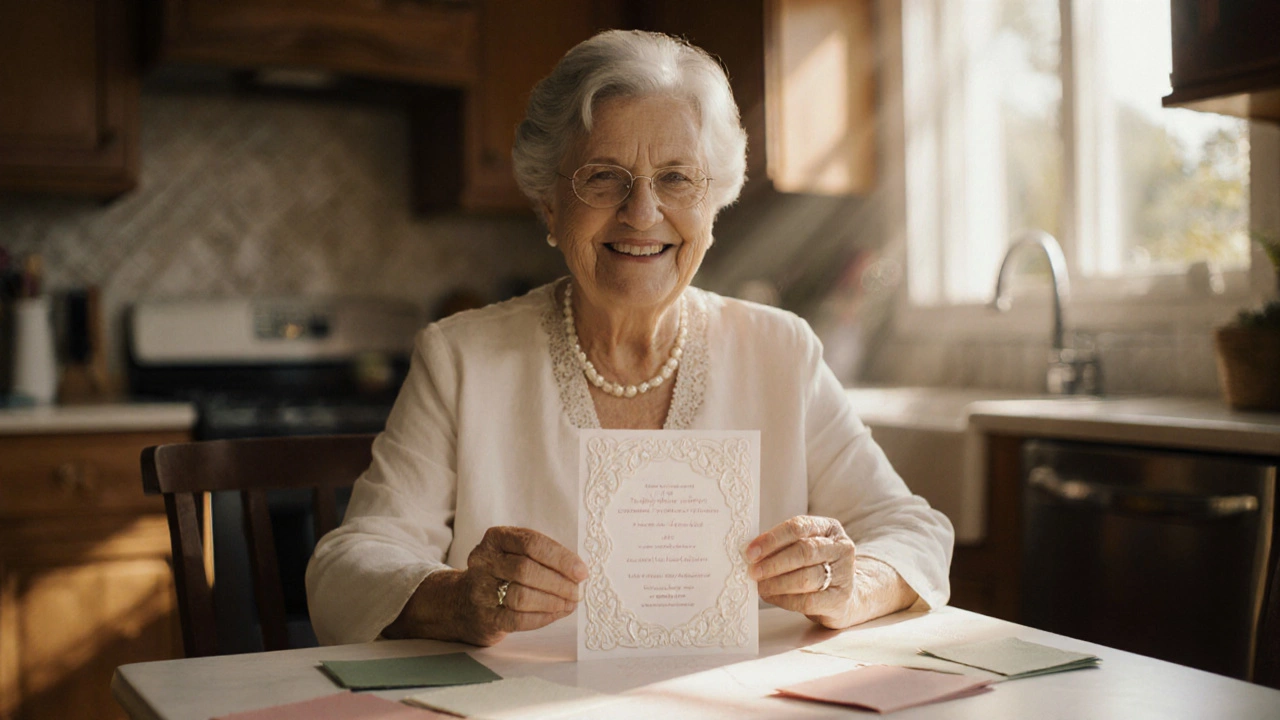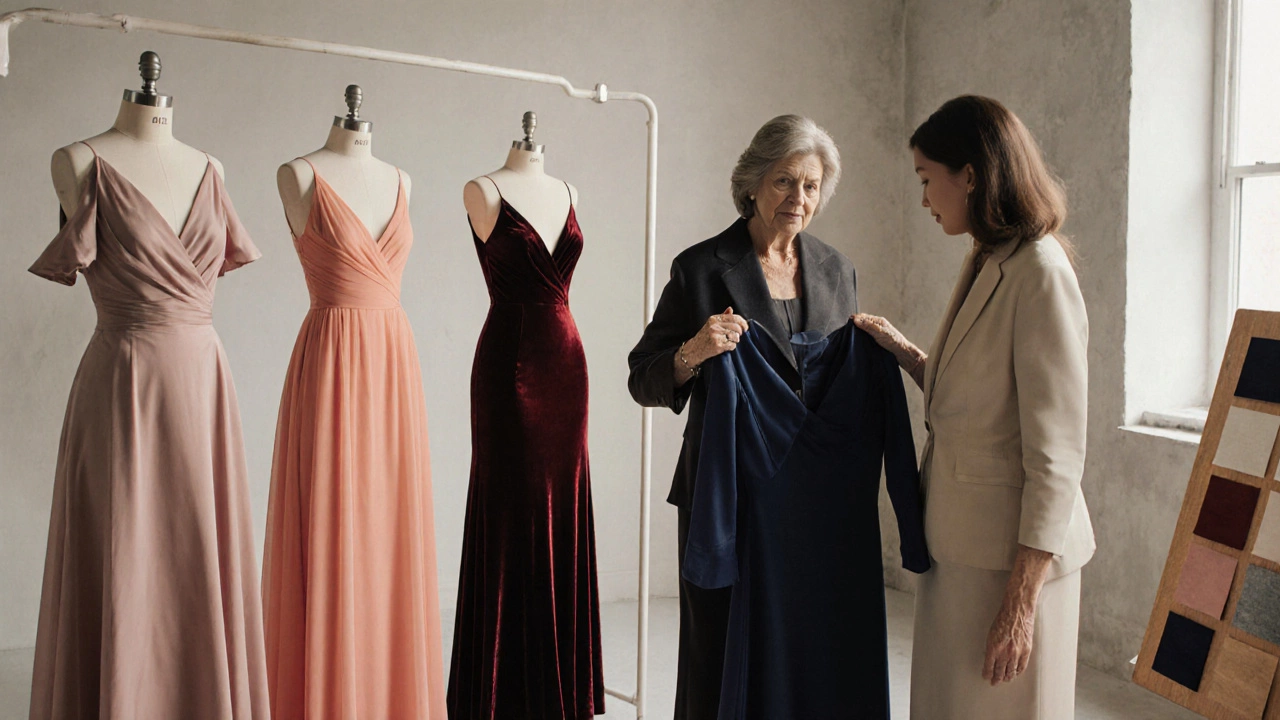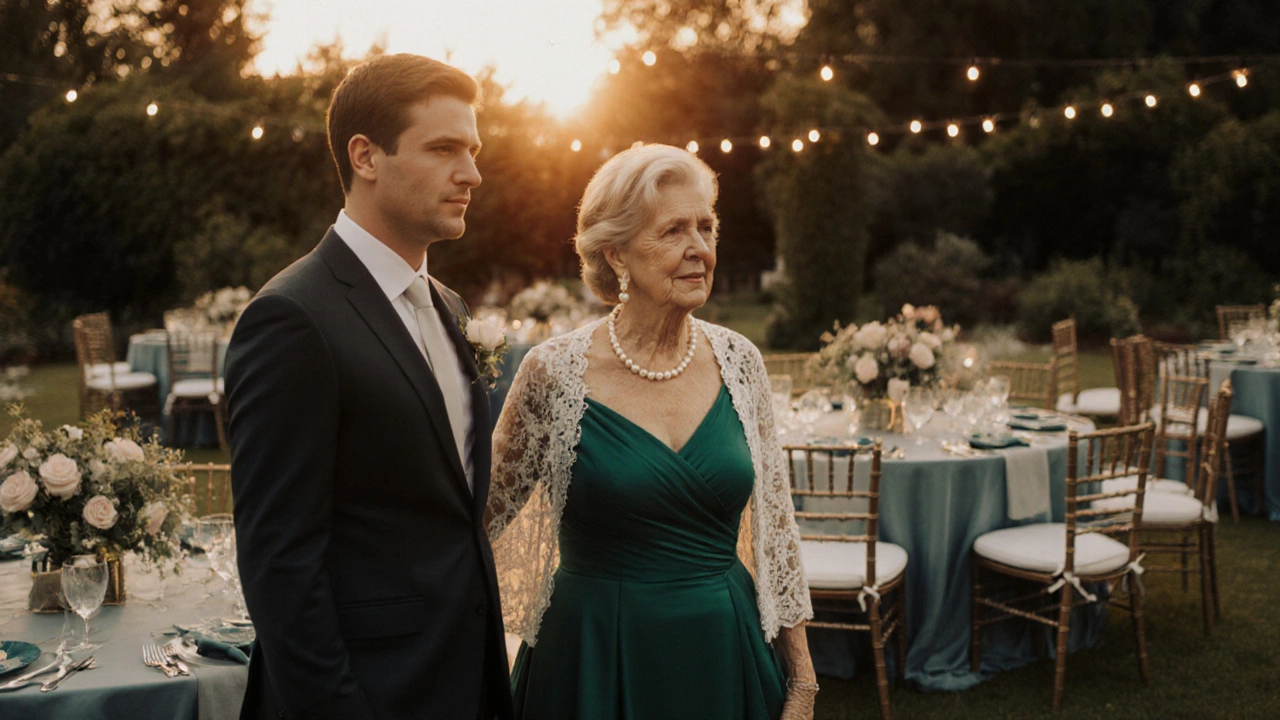Mother of Groom Dress Color Guide: What to Wear to a Wedding
 Oct, 10 2025
Oct, 10 2025
Mother of Groom Dress Color Guide
Color Palette Examples
When the invitation arrives, the first question many mothers of the groom ask is, “What should I wear?” The answer isn’t a single shade but a blend of etiquette, season, venue, and the couple’s overall palette. This guide walks you through every factor so you can pick a color that feels right, looks great, and respects wedding traditions.
Know Your Role in the Wedding Color Story
Mother of Groom is a key guest whose outfit helps set the visual tone for the day. While the bride’s dress is the centerpiece, the mother of the groom’s color should complement, not compete. Think of your dress as a supporting brushstroke that highlights the couple’s chosen palette.
Match the Wedding Color Palette, Not the Bride’s Dress
The couple usually picks a palette of two to four main colors. These colors appear in the invitations, flowers, table linens, and décor. Aligning your dress with that palette creates cohesion.
Here’s a quick cheat‑sheet that shows the most common palette groups and safe dress colors:
| Season | Palette Theme | Suggested Dress Colors |
|---|---|---|
| Spring | Soft pastels (blush, mint, lavender) | Dusty rose, sage green, light teal, ivory |
| Summer | Bright accents (coral, turquoise, yellow) | Coral, navy, champagne, soft gold |
| Autumn | Earthy tones (burgundy, rust, forest) | Burgundy, deep plum, burnt orange, charcoal |
| Winter | Cool neutrals (silver, icy blue, emerald) | Emerald, navy, silver, deep teal |
Pick a hue from the “Suggested Dress Colors” column that feels comfortable for you. If the palette includes a navy accent, a navy dress is a safe bet. Avoid wearing the exact shade of the bride’s gown-usually white, ivory, or blush-unless the couple explicitly says it’s okay.

Understanding the Dress Code
Dress code is often printed on the invitation (e.g., “Black tie,” “Formal,” “Semi‑formal”). Here’s a quick rundown:
- Black tie: Floor‑length gowns in rich fabrics, deep colors, minimal sparkle.
- Formal / black‑tie optional: Cocktail‑length dresses or elegant floor‑length options.
- Semi‑formal: Knee‑length or tea‑length dresses, lighter fabrics, brighter hues.
- Casual: Dressy sundress or a nice jumpsuit, but still coordinated with the palette.
When in doubt, ask the couple or the wedding planner. It’s better to be a shade too formal than under‑dressed.
Choose the Right Silhouette & Fabric
Dress silhouette influences comfort and visual harmony. Classic shapes that flatter most body types include:
- A‑line: Fitted at the waist, flares gently-works for both formal and semi‑formal settings.
- Sheath: Straight cut, elegant for evening events.
- Wrap: Adjustable fit, great for daytime ceremonies.
Fabric choice should match the season and venue. For a summer garden wedding, lightweight chiffon or organza keeps you cool. Winter indoor venues favor silk, velvet, or heavier crepe.
Accessorize Thoughtfully
Accessories can tie your outfit to the wedding palette without overwhelming it.
- Jewelry: Pearls, understated gold, or a single statement piece that mirrors a accent color (e.g., a turquoise pendant for a turquoise palette).
- Shoes: Neutral shades-nude, silver, or a matching hue. Ensure they’re broken in for comfort.
- Shawl or bolero: Perfect for cooler evenings and adds an extra layer of color.
Remember that less is more; you don’t want to outshine the bride.

Cultural & Regional Nuances
Different cultures have specific expectations for mothers of the groom.
- Indian weddings: Bright, saturated colors are celebrated. A deep magenta or royal blue dress works well, but avoid white.
- Chinese traditions: Red is auspicious, yet some couples prefer to keep red for the bride’s dress. Confirm beforehand.
- Middle Eastern celebrations: Modest cuts and rich fabrics like silk or brocade are common; coordinate with the couple’s color scheme.
When traveling internationally, a quick conversation with the couple’s families clears up any misunderstandings.
Common Mistakes to Avoid
- Matching the bride’s exact dress: It can feel like competition.
- Choosing a color that clashes with the palette: Stick to the suggested range.
- Ignoring the venue’s dress code: A beach ceremony calls for breezy fabrics, not heavy silk.
- Over‑accessorizing: One or two pieces are enough.
- Wearing white or ivory unless the couple explicitly says it’s okay.
By keeping these pitfalls in mind, you’ll feel confident walking down the aisle beside your son.
Frequently Asked Questions
Can I wear the same color as the mother of the bride?
It’s best to avoid identical colors. Choose a shade from the same palette but with a different intensity-e.g., if the mother of the bride is in a deep navy, you might opt for a soft slate or a navy‑based accessory.
Is it okay to wear black to a summer wedding?
Yes, if the invitation says “formal” or “black tie.” Choose a lightweight black fabric like chiffon to keep cool, and pair with a bright clutch that matches the wedding’s accent color.
What if the couple hasn’t shared a color palette?
Start with neutral tones-ivory, soft gray, or muted blush-and add a small pop of color (like a scarf or jewelry) that feels appropriate for the season and venue.
Should I bring a shawl for an outdoor ceremony?
A lightweight shawl or bolero is a smart addition. Choose a fabric that complements your dress and the color palette-think sheer lace in a matching hue.
Is it acceptable to wear a jumpsuit?
Absolutely, if the dress code is semi‑formal or the ceremony is modern. Pick a jumpsuit in a palette‑approved color and add elegant accessories to keep it wedding‑appropriate.